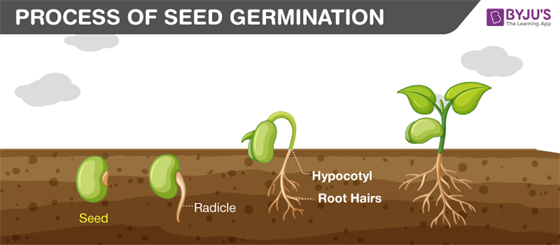What is Quiescence?
Quiescence is a kind of resting stage where there is no activity in a non-dormant seed. In other words, the seed development is stopped. The absence of favourable conditions like light, temperature and moisture leads to this phase. Under favourable conditions, the embryo resumes its growth. Here, the cell division rate is oppressed.
What is Dormancy?
Dormancy can be characterised as the stage or phase where viable seeds are kept from developing under harsh conditions. It is also a resting stage where seeds are protected from damage that can be caused due to unfavourable conditions. Hence, it is also considered as an adaptation of the seed. Seed dormancy is a favourable adaptation for the plant, whereas unfavourable in the agriculture field. They can also be reversed artificially by chemical treatments.
Also Read: Seed Dormancy

Difference between Quiescence and Dormancy
Both dormancy and quiescence are phases that delay the germination process. This increases the survival rate of the seed. Let’s know the difference between these phases.
Quiescence |
Dormancy |
|
It is a resting stage where a non-dormant seed shows zero activity. Under favourable conditions, they start germinating. |
It is an adaptive method that prevents seed growth during harsh conditions. It is considered a survival mechanism. |
|
This phase is comparatively shorter than dormancy. |
This phase can be for a month or even extend up to a year. |
|
No internal barriers in seed germination. |
The growth barriers can be exogenous (outside embryo) or even endogenous (inside embryo). |
|
They are quickly reversed under favourable conditions. |
Even under favourable conditions, the growth reversal is not as quick as quiescence. |
Frequently Asked Questions
What are the favourable conditions for germination?
What is seed germination?
The development of a plant involves various steps like the formation of leaves, roots, etc. The first step in the plant development process is seed germination. Under favourable conditions, the seed germinates for growth.

What is abscission?
Plants will abscise or shred the parts that are no longer needed. For example, shredding of leaves by deciduous plants before winter. This process is called abscission. Damaged leaves are also abscised to conserve water. Sometimes, immature fruits and premature leaves are also abscissed.
Also See: Photoperiodism, Vernalisation and Seed dormancy.
Keep exploring BYJU’S Biology for more exciting topics.

Comments